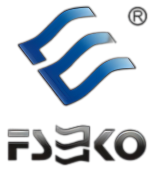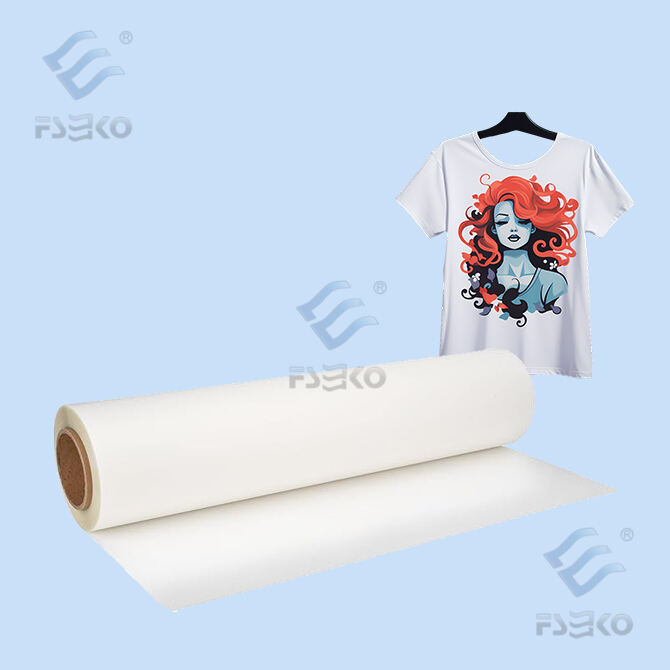How DTF Film Revolutionizes Modern Printing Processes
Transitioning from Traditional Transfer Methods to DTF Technology
Existing transfer techniques such as screen print and heat transfer have generally failed to meet the brilliance and detailed accuracy that DTF processes allow. Screen printing, while an old workhorse, is not capable of producing detailed designs and tonal ranges without time-consuming set-up, and the associated expenses. Heat transfer methods, although adaptable, can occasion color loss and peeling over repeated washing. DTF technology on the other hand brings a new way that can easily print vibrant colors and small details. Not only does this innovative process increase the quality of the print, but it also allows us to offer a much wider selection of textile blanks.
DTF technology solves these issues by allowing for direct printing on a wide range of materials and detailed printing, which is perfect for special applications like personalized garments or advertising articles. That it can print on light and also very dark colored garments without sacrificing quality is what makes DTF so unique. "The DTF printing market is expected to register a CAGR of 6%, through the forecast period, 2019-2024" Research and Markets states the increase in demand for DTF have been boosted by the popularity of sustainable and personalised clothing. Erin Smith, Co-Owner, Spotlight Strategies, added to the list a combination of benefits that makes DTF an attractive alternative that meets quality print delivery with speed and cost effectiveness— an industry game changer in printing technology.
Key Properties Enabling High-Detail Reproduction
The secret behind DTF printing high-detail reproduction is our specialized ink formula that fully clings to fabric while providing stretch and durability! Because of DTF’s unique formula and heat activated adhesive, the bond that it creates is much stronger than standard inks, offering an amazing clarity to intricate designs. The film's thickness and texture also assist in reproducing complex or photo-realistic images that do not exhibit distortion. The choice of film materials is important for achieving correct print quality.
Many companies that have moved to DTF printing attest to 10x better print quality and customer success. For example, Spotlight Strategies, a company that focuses on custom apparel, has experienced improved color accuracy and color matching since converting to DTF printing. Experts in the field emphasize the advantages, with reviews explaining how DTF's methodical workflow leads to greater adherence and better fade resistance, revolutionizing textile printing. This inks technology and innovative materials used in DTF does have its performance specifications, and has indeed opened the door for designers and manufacturers to let their hair down and create some rather outstanding prints.
Scratch-Resistant Films: Ensuring Longevity in DTF Applications
Protective Layer Science Behind Durable Prints
This scratch resistant film science is based on sophisticated polymers and coating methods that will contribute to the life of your DTF prints. These films are produced with a mix of hard coatings that shield the print from physical abuse, even in high wear environments like apparel and promotional products. This protective film is actually much clearer and easier to see through than your standard clear tape which allows you to not only keep your prints as beautiful as the day they were printed but also preserves and protects your prints by adding an additional, clearly visible layer of protection. The value of scratch-resistant laminates is justified by certifications from test labs that attest the superior print quality performance.
Comparing Scratch-Proof Film Performance Metrics
When considering scratch-proof films, durability, flexibility and cost should be taken into account. The value of R s, w being 5 036 Ω can be calculated applying Eq. 1 in Table 5 and in transparencies available in the market a comprehensive comparison between different films is shown, by which users may select the most appropriate for applications. Durability measurements are generally depended on the choice of a particular polymer blend and its thickness, while flexibility is vital for applications involve repetitive bending or straining. Charts and graphs comparing these provide an easy way to visualize variations in performance. Consumer references and studies also show the longevity and performance of scratch-resistant films and why their value is reinforced in DTF usage.
Eco-Friendly DTF Solutions Reshaping Sustainable Printing
Biodegradable Laminating Film Formulations
The use of biodegradable polymers is being explored in direct-to-film (DTF) film manufacturing for environmental and sustainability considerations. These films frequently contain biopolymers and components that are degradable in the course of time, which reduces the landfill content. For the printing industry, sustainability is no longer simply a buzzword; the movement is increasingly important to both consumers and businesses. These sustainable options match the increasing demand for more environmentally friendly methods in production and give the business a competitive advantage. Studies have shown that biodegradable films contribute to lowering the carbon footprint left by typical printed items, a major bonus for eco-minded brands.
Energy-Efficient Curing Processes in Modern Systems
Industry sector trends Modern technology has ushered in energy-efficient curing operations in DTF printer systems, making greener solutions available to the industry. These systems require less energy by improving the transfer of heat and cure times compared to traditional methods, thus reducing the carbon footprint for any printing form. State of the art features like special heating elements and a dynamic heat control make the printing process more sustainable. It is not uncommon for expert views to make special note of how indispensable the benefits of energy-efficient practices are, while reminding us that using less energy does not mean we create poor-quality prints. Industry reports confirm that embracing these procedures is not only green-friendly but, also helps to streamline operations, making a winning combo for companies that need to do well in this economy to have a shot at going green.
Heat Lamination Breakthroughs Enhancing DTF Versatility
Temperature Control Innovations for Diverse Materials
Recent advancements in temperature control technologies have greatly expanded the flexibility of Direct-to-Film (DTF) printing by optimizing adhesive performance on various substrates. Most advanced heat lamination films are currently tailored to a wide range of substrates, overcoming the problems created when substrates have different levels of thermal sensitivity. For example, it’s now also possible to print heat-sensitive materials and firm substrates such as metal, plastic and ceramics due to the control of heat in specific areas, which prevents damage to the parts and ensures high adhesion. Case studies show how companies have utilized these technologies to solve particular problems, from preventing heat-sensitive fabrics from scorching to achieving vibrant prints. These improvements have not only elevated print quality, but also broadened the range of uses for DTF technology as a first choice for manufacturers working across multiple material substrates.
Multi-Substrate Adhesion Advancements
Improvements in multi-substrate adhesion properties of DTF film are the major achievements of printing science and technology. Such improvements allow better adhesion to multiple substrates, such as as much metal as possible, and plastics and textiles, etc., thereby extending the application of DTF. Improvements in adhesive chemistry produce easier, faster transfers – which means less trouble to make them and less material is wasted. Companies in every field of industry have made use of these innovations to undertake more complex projects, to print on a greater variety of materials, to provide a greater product range that maintains its quality and longevity. Comments by businesses point to successful application of these films to variety of products to enable the creation of highly detailed patterns, illustrating increased ability to customize as well as additional market potential. These developments improve the technological efficacy of DTF systems and meet the increasing need for customized printing services in a crowded market.
Global Market Trends Driving DTF Film Innovation
Customization Demands in Apparel and Textile Sectors
The requirement for personalised garments and textile products are growing and DTF (Direct-to-Film technology is just the way for that. There is a growing trend of the consumers willing to wear personalized clothes which are essential for maintaining a personal identity and keeping up with the fashion. This increased demand is also impacting the growth of digital printing technology, especially in the area of apparel, according to recent market research. The worldwide market for DTF printing is projected to rise with a CAGR of 6.50% over the forecast period and a jump from USD 3.99 billion in 2022 to $% 3.99 billion in 2030. In the Americas, for example, the focus of the fashion industry on personalization has led to a highly individualized market.
DTF technology's versatility in delivering colorful, long-lasting prints is pivotal in meeting the increased consumer demand for customized items. DTF has thus been decided as an imperative driver in custom garment trends. Such increased demand is also changing the way apparel is being produced and sparking the exploration of how to enhance the efficiency, eco-friendliness of DTF technique. Anement such as being environmentally friendly, for example using green inks is becoming more important when achieving green label and meeting consumer needs, so as to accelerate the pace of DTF technology into the mainstream market.
Industrial Adoption in Specialty Packaging Solutions
Specialty packaging industry is another hotbed where this DTF technology is creating a noticeable impact with integration and use at different domains prevalent. One of the main reasons is the bright colors, strength and versatility available in DTF films, DTF’s being essential to innovative packaging design. DTF technology has been used as a part of this niche packaging market to manufacture visually enticing designs that promote the shelf appeal of a product.
Industry news has reported the potential for growth in DTF usage in the packaging industry in response to the demand for distinctive and adaptable new packaging solutions. As consumer demands become more sophisticated, brands are in search of packaging that not only speaks to the product but excites the senses. This need has driven the key role of DTF technology, which enables easy placement into various packaging forms yet maintaining the complex design. DTF films are giving companies who are implementing them in packaging solutions an edge as more industries discover the value of the visually captivating aspect and functionality of these films.


